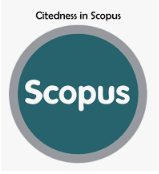Pengaruh Blended Learning Terhadap Motivasi Dan Hasil Belajar Siswa Di Min 1 Tulungagung
DOI:
https://doi.org/10.56404/tej.v1i2.74Keywords:
Blended Learning,, Learning Motivation,, Learning Outcomes, YouTubeAbstract
This research aims: 1) To analyze the effect of implementing Blended Learning on the learning motivation of second-grade students at MIN 1 Tulungagung, 2) To analyze the effect of implementing Blended Learning on the learning outcomes of second-grade students at MIN 1 Tulungagung, 3) To analyze the effect of implementing Blended Learning on the motivation and learning outcomes of students at MIN 1 Tulungagung. The type of research used is a quasi-experiment with a population of all second-grade students at MIN 1 Tulungagung, totaling 64 students. Data collection techniques used questionnaires and post-tests, which were analyzed using parametric statistics with an independent T-Test. The research results show: 1) There is a difference in learning motivation between students taught with Blended Learning (experimental class) compared to students taught with conventional learning (control class) with a significance value of 0.002 and an average motivation of 89, 2) There is a difference in student learning outcomes with a significance value of 0.016 and an average learning outcome of 84, 3) There is an increase in student learning motivation due to the implementation of Blended Learning with a significance value of 0.002 and an increase in score by 11 points, as well as an increase in student learning outcomes with a significance value of 0.016 and an increase in score by 12 points.
References
K. Thorne, Blended learning: how to integrate online & traditional learning. Kogan Page Publishers, 2003.
D. R. Garrison and N. D. Vaughan, Blended learning in higher education: Framework, principles, and guidelines. John Wiley & Sons, 2008.
C. D. Dziuban, J. L. Hartman, and P. D. Moskal, “Center for Applied Research EDUCAUSE,” 2004.
J. S. Nasution, “Hubungan antara motivasi belajar dan minat belajar terhadap hasil belajar bahasa arab pada siswa kelas viii smpit fajar ilahi batam,” J. As-Said, vol. 2, no. 1, pp. 100–115, 2022.
E. R. Mulyani, “Analisis Perhatian Orang Tua terhadap Minat Belajar Siswa Kelas IV Sekolah Dasar pada Masa Pandemi Covid 19,” J. Pendidik. Tambusai, vol. 5, no. 1, pp. 261–266, 2021.
A. R. Rahim, “Penguasaan Kosakata Bahasa Indonesia pada Mahasiswa PIAUD STAI Darul Ulum Kandangan dalam Keterampilan Berbicara,” SENTRI J. Ris. Ilm., vol. 2, no. 2, pp. 414–425, 2023.
R. Susila, “PENERAPAN STRATEGI PEMBELAJARAN BERBASIS PANTUN PADA MATERI ISI KANDUNGAN QS AL-‘ASHR DAN QS AL-‘ALAQ AYAT 1-5 KELAS IX MTS. N 3 MEMPAWAH,” Cendekia Sambas, vol. 1, no. 2, pp. 1–10, 2023.
N. Nurdyansyah and E. F. Fahyuni, “Inovasi model pembelajaran sesuai kurikulum 2013.” Nizamia Learning Center, 2016.
S. T. Nurliana Nasution, M. C. F. Y. Darmayunata, M. Kom, and M. T. A. S. Wahyuni, Augmented Reality dan Pembelajaran di Era Digital. Penerbit Adab, 2022.
M. S. Sidiq, “Pengaruh Model Blended Learning Berbasis Pendekatan STEM Terhadap Keterampilan Generik Sains Peserta Didik pada Materi Fluida Dinamis.” Jakarta: FITK UIN Syarif Hidayatullah Jakarta.
A. W. F. Sani, “Perlindungan Hak Cipta Terhadap Konten Creator Video Tiktok Yang Diunggah Ulang Tanpa Watermark Pada Youtube Shorts.” Universitas Hasanuddin, 2022.
D. I. Effendi, D. Lukman, and R. Rustandi, “Dakwah digital berbasis moderasi beragama.” Yayasan Lidzikri, 2022.
Y. Yantoro, A. Hariandi, Z. Mawahdah, and M. Muspawi, “Inovasi guru dalam pembelajaran di era pandemi COVID-19,” JPPI (Jurnal Penelit. Pendidik. Indones., vol. 7, no. 1, pp. 8–15, 2021.
M. Maradona, “Faktor-faktor yang mempengaruhi keaktifan belajar siswa kelas IV B SD,” Basic Educ., vol. 5, no. 17, pp. 1–619, 2016.
F. Fitriansyah, “Pemanfaatan media pembelajaran (gadget) untuk memotivasi belajar siswa SD,” Cakrawala-Jurnal Hum., vol. 16, no. 1, 2016.
P. Ngalim, “Ilmu pendidikan teoritis dan praktis,” Bandung: Remaja Rosdakarya, 2006.
A. Rivai and N. Sudjana, “Media pengajaran,” Bandung Sinar Baru Algesindo, vol. 61, 2005.
A. F. Manggabarani and M. Masri, “Pengaruh model pembelajaran blended learning terhadap motivasi dan hasil belajar siswa kelas x sma negeri 1 pitumpanua kab. wajo (studi pada materi pokok sistem periodik unsur),” J. Chem. Vo/. 17 Nomor 2 Desember 2016, 83–93, 2016.
T. D. Hastjarjo, “Rancangan eksperimen-kuasi,” Bul. Psikol., vol. 27, no. 2, pp. 187–203, 2019.
M. Makbul, “Metode pengumpulan data dan instrumen penelitian,” 2021.
H. Nawawi, “Metode penelitian bidang sosial,” (No Title), 1983.
A. Husaini, “Pengaruh Variabel Return On Assets, Return On Equity, Net Profit Margin Dan Earning Per Share Terhadap Harga Saham Perusahaan,” Profit (Jurnal Adm. Bisnis), vol. 6, no. 1, 2012.
M. Singarimbun and S. Effendi, “Metode penelitian survei,” 1995.
















